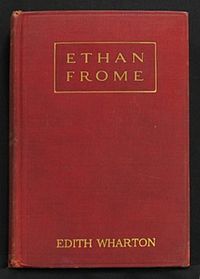
The Green Mile is a 1996 serial novel by American writer Stephen King. It tells the story of death row supervisor Paul Edgecombe's encounter with John Coffey, an unusual inmate who displays inexplicable healing and empathetic abilities. The serial novel was originally released in six volumes before being republished as a single-volume work. The book is an example of magical realism. The subsequent film adaptation was a critical and commercial success.

In Search of Lost Time, first translated into English as Remembrance of Things Past, and sometimes referred to in French as La Recherche, is a novel in seven volumes by French author Marcel Proust. This early 20th-century work is his most prominent, known both for its length and its theme of involuntary memory. The most famous example of this is the "episode of the madeleine", which occurs early in the first volume.

Edith Wharton was an American writer and designer. Wharton drew upon her insider's knowledge of the upper-class New York "aristocracy" to portray realistically the lives and morals of the Gilded Age. In 1921, she became the first woman to win the Pulitzer Prize in Fiction, for her novel The Age of Innocence. She was inducted into the National Women's Hall of Fame in 1996. Among her other well known works are The House of Mirth, the novella Ethan Frome, and several notable ghost stories.

True Grit is a 1969 American Western film directed by Henry Hathaway, starring John Wayne as U.S. Marshal Rooster Cogburn, Glen Campbell as La Boeuf and Kim Darby as Mattie Ross. It is the first film adaptation of Charles Portis' 1968 novel of the same name. The screenplay was written by Marguerite Roberts. Wayne won an Oscar for his performance in the film and reprised his character for the 1975 sequel Rooster Cogburn.

The God of Small Things is a family drama novel written by Indian writer Arundhati Roy. Roy's debut novel, it is a story about the childhood experiences of fraternal twins whose lives are destroyed by the "Love Laws" prevalent in 1960s Kerala, India. The novel explores how small, seemingly insignificant occurrences, decisions and experiences shape people's behavior in deeply significant ways. The novel also explores the lingering effects of casteism in India, lending a culturally-specific critique of British colonialism in India. It won the Booker Prize in 1997.

The Age of Innocence is a 1920 novel by American author Edith Wharton. It was her eighth novel, and was initially serialized in 1920 in four parts, in the magazine Pictorial Review. Later that year, it was released as a book by D. Appleton & Company. It won the 1921 Pulitzer Prize for Fiction, making Wharton the first woman to win the prize. Though the committee had initially agreed to give the award to Sinclair Lewis for Main Street, the judges, in rejecting his book on political grounds, "established Wharton as the American 'First Lady of Letters'". The story is set in the 1870s, in upper-class, "Gilded Age" New York City. Wharton wrote the book in her 50s, after she was already established as a major author in high demand by publishers.
A frame story is a literary technique that serves as a companion piece to a story within a story, where an introductory or main narrative sets the stage either for a more emphasized second narrative or for a set of shorter stories. The frame story leads readers from a first story into one or more other stories within it. The frame story may also be used to inform readers about aspects of the secondary narrative(s) that may otherwise be hard to understand. This should not be confused with narrative structure. A notable example is The Decameron.
"Roman Fever" is a short story by American writer Edith Wharton. It was first published in Liberty magazine on November 10, 1934. A revised and expanded version of the story was published in Wharton's 1936 short story collection The World Over.
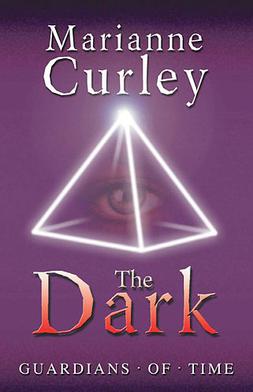
The Dark is a fantasy novel written by Marianne Curley. It is the second book in the Guardians of Time Trilogy.
Douglas Allanbrook was an American composer, concert pianist and harpsichordist. He was associated with a group of mid-twentieth century Boston composers who were students of Nadia Boulanger. His compositions are described by the Kennedy Center as "smooth, showing astute sense, assertiveness, and originality."

True Grit is a 1968 novel by Charles Portis that was first published as a 1968 serial within The Saturday Evening Post. The novel is told from the perspective of a woman named Mattie Ross, who recounts the time when she was 14 and sought retribution for the murder of her father by a scoundrel, Tom Chaney. It is considered by some critics to be "one of the great American novels." True Grit is included in the Library of America of Portis' Collected Works.

The Lenox Library is the principal public library of Lenox, Massachusetts. It is managed by the non-profit Lenox Library Association, founded in 1856, and is located at 18 Main Street, in a former county courthouse that is listed on the National Register of Historic Places.

Djinn is a novel by French writer Alain Robbe-Grillet. It was written as a French textbook with California State University, Dominguez Hills professor Yvone Lenard using a process of grammatical progression. Each chapter covers a specific element of French grammar which becomes increasingly difficult over the course of the novel. The first five chapters are written in the present tense from the first person point of view. The sixth chapter is written partially in the third person past and partially in the first person present. The eighth chapter is written in the first person point of view, but the narrator has changed from the masculine Simon Lecoeur to an unknown female narrator.

The Friendly Persuasion is an American novel published in 1945 by Jessamyn West. It was adapted as the motion picture Friendly Persuasion in 1956. The book consists of 14 vignettes about a Quaker farming family, the Birdwells, living near the town of Vernon in southern Indiana along "the banks of the Muscatatuck, where once the woods stretched, dark row on row." The Birdwells' farm, Maple Grove Nursery, was handed down to them by pioneering forebears who came west nearly fifty years before the onset of the novel. Originally published between 1940 and 1945 as individual stories in Prairie Schooner, Collier's, Harper's Bazaar, The Atlantic Monthly, the Ladies' Home Journal, New Mexico Quarterly Review, and Harper's Magazine, West had them reprinted in more or less chronological order covering a forty-year span of the Birdwell family's lives in the latter half of the 19th Century.
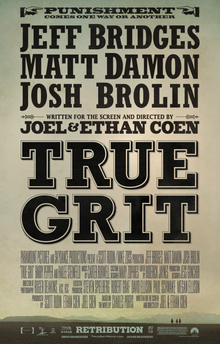
True Grit is a 2010 American Western film directed, written, produced, and edited by Joel Coen and Ethan Coen. It is an adaptation of Charles Portis' 1968 novel of the same name, starring Jeff Bridges as Deputy U.S. Marshal Reuben J. "Rooster" Cogburn and Hailee Steinfeld as Mattie Ross. The film also stars Matt Damon, Josh Brolin, and Barry Pepper. A previous film adaptation in 1969 starred John Wayne, Kim Darby and Glen Campbell.
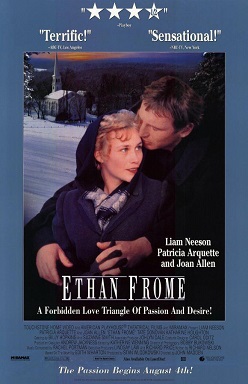
Ethan Frome is a 1993 British-American romantic historical drama film directed by John Madden, and starring Liam Neeson, Patricia Arquette, Joan Allen and Tate Donovan. It is an adaptation of the 1911 novel Ethan Frome by Edith Wharton.

Zeena Galatea Schreck, known professionally by her mononymous artist name ZEENA, is a Berlin-based American visual and musical artist, author and the spiritual leader of the Sethian Liberation Movement (SLM), which she founded in 2002.
Old New York (1924) is a collection of four novellas by Edith Wharton, revolving around upper-class New York City society in the 1840s, 1850s, 1860s, and 1870s.
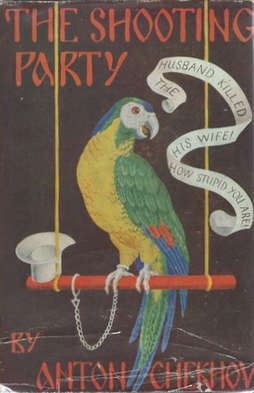
The Shooting Party is an 1884 novel by Anton Chekhov. It is his longest narrative work, and only full-length novel. Framed as a manuscript given to a publisher, it tells the story of an estate forester's daughter in a provincial Russian village, who is stabbed to death in the woods during a hunting party, and the efforts to uncover her killer.
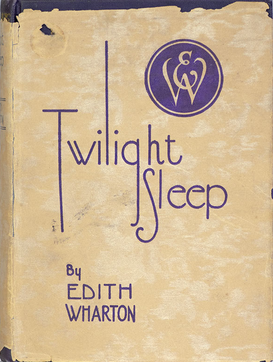
Twilight Sleep is a novel by American author Edith Wharton and was first published in 1927 as a serial in the Pictorial Review before being published as a novel in the same year. The story, filled with irony, is centered around a socialite family navigating the New York of the Jazz Age and their relationships. This novel landed at number one on the best-selling list just two months after its publication and finished the year at number 7. Even as a best selling novel Twilight Sleep was not well received by critics at the time, who, while appreciating Wharton as a writer, struggled with the scenarios and characters she had created in the novel. While it was not considered as such in its own time period, today Twilight Sleep is widely considered to be a modernist novel as it employs modernist literary devices, such as an ever changing narration among the novel's characters and a close examination of the characters' self-identities and relationships with one another.
